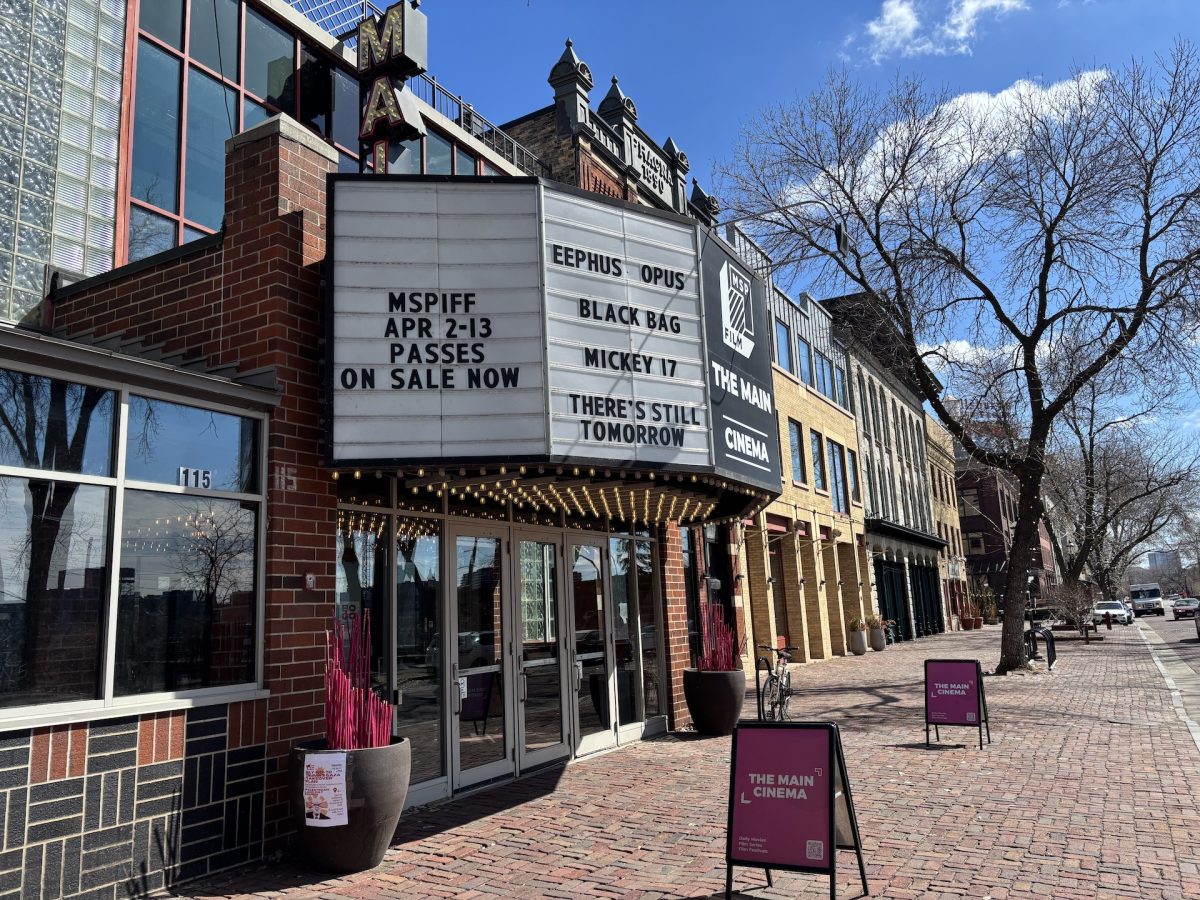When the word Viking is mentioned, the vast majority of us immediately conjure up images of Hagar the Horrible comic strips or a professional football team that consistently chokes in the playoffs. At a stretch, we might remember a particularly moving passage from Michael Crichton’s best-selling novel “Eaters of the Dead,” which was later made into the banal and unaffecting 1999 film “The 13th Warrior.” “The North Atlantic Saga,” currently on display at the Science Museum of Minnesota in deserted downtown St. Paul, aims to break through the rampant stereotypes associated with our misunderstood Norse ancestors. The exhibit simultaneously embraces and celebrates the bizarre contradictions of one of the most curious races ever to walk the earth.
The term Viking is itself a tad misleading. The blanket label refers to folks from the countries of Norway, Sweden, Denmark and Iceland who shared similar political, economic and religious beliefs and spoke a variety of closely related Germanic tongues. Despite their similarities, however, various groups of Vikings had substantial differences with each other. While Danish Vikings cast their eyes Britain-ward, with serious consequences for both British history and the English language, many Swedish Vikings chose to look toward Russia and the Byzantine Empire for lucrative trading missions. In fact, the country of Russia takes its name from the Swedish Vikings called “Rus,” who were instrumental in knitting together a land of tiny, far-flung principalities into one gigantic kingdom.
Vikings have long been celebrated as bloodthirsty conquerors and fearless adventurers. In reality, the largely peaceful “barbarian hordes” apparently spent a good deal of time perfecting shipbuilding techniques. In Iceland, one of the oldest prototypes of democracy, the Althing (a type of parliament), met every year in high summer to make laws and adjudicate disputes. This surprisingly progressive bunch beat the Spanish to North America by more than 500 years. Historians now assert that the first meeting between Viking Europeans and American Indians was peaceful. Columbus, on the other hand, insisted on turning a profit on his somewhat discombobulated explorations and ended up cutting off slaves’ hands if they showed up without a pile of gold.
The Vikings’ exploration of the New World has been little noted until recently. More than 1,000 years ago, these people bid adieu to their icy homelands to explore the Atlantic Ocean and what lay beyond. The Vikings wanted more land, more natural resources, and freedom from the restrictions increasingly present in a European power structure that was growing more and more centralized. New archeological digs now verify parts of the Norse sagas, which claimed first contact between the Old World and the New for the Vikings. The ruins of a Viking settlement at L’Anse aux Meadows, Newfoundland are a popular (if remote) tourist attraction, maintained by Parks Canada. The settlement, which is also a UNESCO World Heritage site, was first excavated in 1960.
The Vikings didn’t remain in North America for very long, but some historians currently argue that their positive interactions had an enormous influence. It might be that these early, fairly benign contacts contributed to the utterly unreciprocated positive reception that other Europeans received when they came to North America hundreds of years later.
Among their other pursuits, the Vikings created a runic alphabet called the Futhark. Linguist and novelist J.R.R. Tolkein based his imaginary “moon” variety on Viking runes and the defunct Gothic language. But runes aren’t merely the playground of absent-minded English professors. The roots of many of the words I’m typing on my keyboard find their origins in the languages which were originally written with Norse runes.
The sprawling exhibit is touted as the largest held so far in the Science Museum’s spacious new premises. Most of the artifacts on display are close to 1,000 years old. One conspicuous absence is the lack of horned helmets. That’s because those helmets are one of many commercially manufactured myths created to “sell” a more attractively packaged idea of Norse history to an uneducated, though romantic populace of consumers. To be sure, it is incredibly difficult to imagine Bugs Bunny and Porky Pig in “What’s Opera, Doc?” without the horns. Just keep in mind while you’re on your way to the checkout counter, that this is merely pop culture window dressing.
Highlights of the 7,500 square-foot exhibit include Ranavig’s Shrine, which was lifted from an uncooperative Scottish monastery and presented to an attractive Norwegian female in hopes of gaining her favor. There’s also a 9th century Gotland picture stone, which illustrates a lonely ship transporting dead warriors into the Valhalla afterlife. There’s even a primitive Viking outhouse and, my personal favorite, a Viking dressing room in which participants can role-play Sven the Uncomfortably Attired or whatever kinky thing floats your individual boat.
Nordic roots run deep here in hotdish land, yet most people with a little Viking in them remain painfully misinformed about the history of their ancestors. As the exhibit demonstrates, Vikings were innovative farmers, crafty executives and accomplished artists in addition to being weekend marauders. After all, man cannot hope to survive on pillaging, looting and sacking alone.
“The North Atlantic Saga”
Through May 18, Science Museum of Minnesota, (651) 221-9444
Nathan Hall welcomes comments at nhall@mndaily.com







